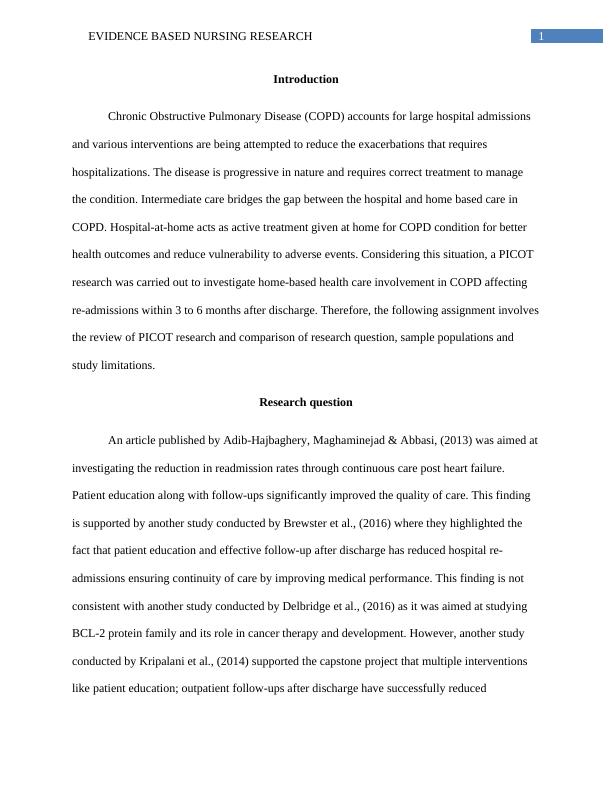Evidence Based Nursing Research on Home-Based Health Care Involvement in COPD
Literature evaluation table for a PICOT statement paper on Chronic Obstructive Pulmonary Disease (COPD).
6 Pages1607 Words264 Views
Added on 2023-06-10
About This Document
This article reviews PICOT research on home-based health care involvement in COPD affecting re-admissions within 3 to 6 months after discharge. It compares research question, sample populations and study limitations.
Evidence Based Nursing Research on Home-Based Health Care Involvement in COPD
Literature evaluation table for a PICOT statement paper on Chronic Obstructive Pulmonary Disease (COPD).
Added on 2023-06-10
ShareRelated Documents
End of preview
Want to access all the pages? Upload your documents or become a member.
Literature Evaluation Table
|3
|734
|167
Reducing the Rate of Re-hospitalization in Home Healthcare Patients
|11
|2675
|104
Research for Nursing and Midwifery Assignment PDF
|10
|2222
|81
NUR4111 Learning Outcomes Case study 2022
|7
|2418
|27



